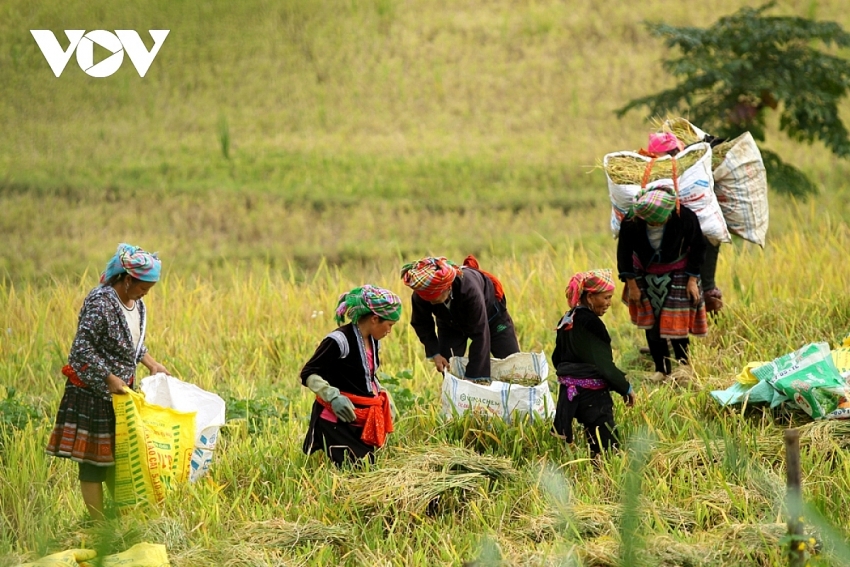COVID-19 threatens Asia-Pacific's progress on SDGs
 |
| COVID-19 threatens Asia-Pacific's progress on SDGs |
The pandemic is pushing an estimated 75-80 million people in developing Asia into extreme poverty as of last year, according to ADB's Key Indicators for Asia and the Pacific 2021, released today. Assuming that the pandemic has increased inequality, the relative rise in extreme poverty – defined as living on less than $1.9 a day – may be even greater. Progress has also stalled in areas such as hunger, health, and education, where earlier achievements across the region had been significant, albeit uneven.
Key Indicators for Asia and the Pacific 2021presents comprehensive economic, financial, social, and environmental statistics for ADB’s 49 regional members. According to the report, about 203 million people, or 5.2 per cent of developing Asia’s population, lived in extreme poverty as of 2017. Without COVID-19, that number would have declined to an estimated 2.6 per cent in 2020.
“Asia-Pacific has made impressive strides, but COVID-19 has revealed social and economic fault lines that may weaken the region’s sustainable and inclusive development,” said ADB chief economist Yasuyuki Sawada. “To achieve the 2030 SDGs, decision-makers need to harness high-quality and timely data as a guide for actions to ensure that the recovery leaves no one behind – especially the poor and vulnerable.”
The SDGs are a global call to action to end poverty, protect the earth's environment and climate, and ensure that people everywhere can enjoy peace and prosperity. As many as 17 interconnected and ambitious goals, which address the major development challenges faced by people in Vietnam and around, have been set forth for Vietnam to achieve.
According to a report by the Ministry of Planning and Investment last year, Vietnam will be able to achieve seven of the 17 SDGs by 2030, including (1) no poverty, (2) zero hunger, (4) quality education, (8) decent work and economic growth, (9) industry, innovation, and infrastructure, (13) climate action, and (17) partnership for the goals. The eight remaining goals will face a lot of challenges, and two others will not be achieved by 2030, that is (12) responsible consumption and production and (14) life below water.
In recent years, Asia-Pacific’s economy has grown at a robust pace and contributed as much as 35 per cent to global GDP – measured in current US dollars, in 2019. But COVID-19 took a toll just when weaker domestic investment and slowing global trade and economic activity were starting to challenge this momentum.
Among reporting economies in Asia-Pacific, only about one in four posted GDP growth last year. The region lost about 8 per cent of work hours due to mobility restrictions, deeply affecting poorer households and workers in the informal economy.
The Key Indicators report includes a special supplement introducing a practical framework for measuring the digital economy and its growing role in modern life, which has been particularly evident during the pandemic.
Key Indicators for Asia and the Pacific 2021also presents the status of SDG indicators in Asia-Pacific, as well as regional trends and tables, including indicators across eight themes – people; economy and output; money, finance, and prices; globalisation; transport and communications; energy and electricity; environment; and government and governance. The pandemic’s impact on global value chains and their role as both a dampener and amplifier of shocks are also analysed in the report.
What the stars mean:
★ Poor ★ ★ Promising ★★★ Good ★★★★ Very good ★★★★★ Exceptional
Related Contents
Latest News
More News
- Cake by VPBank posts strong gains in scale and efficiency leveraging AI focus (January 05, 2026 | 18:55)
- Vietnam's retail market tops $269 billion in 2025 amid e-commerce boom (December 31, 2025 | 19:00)
- Global alliance develops $1 billion AI data centre network in Vietnam (December 30, 2025 | 10:08)
- Businesses ramp up production as year-end orders surge (December 30, 2025 | 10:05)
- Vietnam’s GDP forecast to grow by 9 per cent in 2026 (December 29, 2025 | 08:29)
- Vietnam's top 500 value-creating enterprises announced (December 27, 2025 | 08:00)
- Three-way partnership unveiled to ease financing at Hong Hac City (December 24, 2025 | 14:13)
- PM orders investment model for North–South high-speed rail (December 22, 2025 | 17:43)
- First members of Danang International Finance Centre revealed (December 22, 2025 | 17:39)
- Securing capital and efficiency for Vietnam’s 2026-2030 growth ambitions (December 17, 2025 | 10:00)

 Tag:
Tag:



























 Mobile Version
Mobile Version